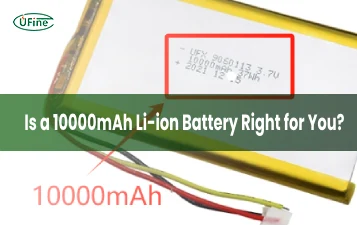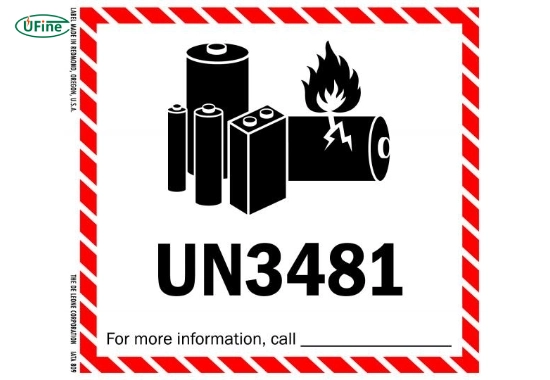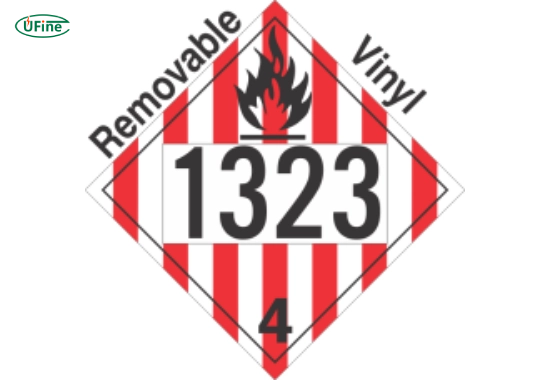What’s the difference between UN3481 and UN1323 when classifying lithium batteries?
UN3481 refers to lithium-ion batteries packed with or contained in equipment. At the same time, UN1323 is used for flammable solids and does not apply to lithium batteries.
If you ship, store, or handle lithium batteries, you have likely encountered UN codes such as UN3481 or UN1323. These codes are part of international regulations for the transportation and handling of dangerous goods, ensuring safety in the transportation and handling of hazardous materials, especially lithium-ion batteries, which can pose fire and explosion risks if not properly managed.
In this guide, we’ll take a deep dive into the UN3481 vs UN1323 debate and explain:
- What does each code mean
- Why proper classification matters
- The regulations you need to follow
- How to stay compliant and avoid fines
Let’s start by understanding the basics.
Part 1. What is a lithium battery?
A lithium battery is a power source that uses lithium ions or lithium metal as the key component of its electrochemistry. These batteries are renowned for their lightweight design, efficiency, and long-lasting performance, making them an ideal choice for mobile devices, power tools, medical devices, solar storage systems, and electric vehicles.
There are two main categories:
- Lithium-ion batteries (Li-ion) – Rechargeable
- Lithium metal batteries – Non-rechargeable
Each type has its own risk profile and transport classification. International shipping regulations require proper labelling and documentation using UN numbers.
Part 2. What does UN3481 mean?
UN3481 is the UN number assigned to lithium-ion batteries that are either:
- Contained in equipment (e.g., a laptop or smartphone), or
- Packed with equipment but not installed (e.g., spare batteries shipped with a drone)
The full official descriptions under UN3481 are:
- UN3481, Lithium-ion batteries contained in equipment
- UN3481, Lithium-ion batteries packed with equipment
This classification is used when rechargeable lithium-ion batteries are part of or accompanying a device. These batteries are regulated under Class 9 – Miscellaneous Dangerous Substances and Articles.
Common examples of UN3481 batteries:
- Laptop batteries
- Smartphone batteries
- Drone batteries packed in the same box
- Power tool batteries shipped with the tool
Part 3. What does UN1323 mean?
UN1323, on the other hand, is entirely unrelated to lithium batteries. It applies to:
UN1323, Flammable solid, organic, N.O.S. (not otherwise specified)
This classification is used for flammable organic substances that are not explicitly identified elsewhere in the UN list. Examples include certain chemical powders or solids.
UN1323 is never used to classify lithium-ion or lithium-metal batteries. If you see UN1323 on a lithium battery shipment or label, that’s a serious misclassification.
Part 4. Un3481 vs Un1323: What’s the difference?
The difference between UN3481 and UN1323 is fundamental — they refer to entirely different categories of materials.
- UN3481 is for rechargeable lithium-ion batteries that are part of or shipped with electronic equipment.
- UN1323 is for flammable organic solids, not batteries.
Why this matters:
Using the wrong UN number can result in major regulatory violations, fines, shipment rejections, and safety risks. If you’re shipping lithium batteries and accidentally use UN1323, you’re putting products, people, and property at risk.
Key Differences Table:
| Feature | UN3481 | UN1323 |
|---|---|---|
| Material Type | Lithium-ion batteries | Flammable organic solids |
| Rechargeable? | ✅ Yes | ❌ Not applicable |
| Applies to batteries? | ✅ Yes | ❌ No |
| Typical Use | Electronics, tools, solar systems | Chemical industry |
| UN Class | Class 9 (Misc. Dangerous Goods) | Class 4.1 (Flammable Solids) |
| Label Required | Lithium battery mark | Flammable solid label |
| Examples | Phones, laptops, drones | Camphor, sulfonated naphthalene |
Part 5. Why proper classification matters?
Using the correct UN classification, like UN3481, is not just about following rules. It’s about ensuring:
- Safe transportation
- Accurate labelling
- Customs clearance
- Insurance coverage
- Fire and explosion risk management
Misclassifying lithium batteries as UN1323 can lead to:
- Confiscated shipments
- Shipping company bans
- Regulatory fines from IATA, ICAO, DOT, or IMDG
- Increased liability for accidents
Part 6. How to identify a UN3481 battery?
Here’s how to know if your battery should be labelled UN3481:
- ✅ It’s a lithium-ion battery
- ✅ It’s rechargeable
- ✅ It’s either inside the device or packed with the device
- ✅ It’s not shipped alone (which would be UN3480)
Many manufacturers and logistics providers label the packaging like this:
- UN3481: Lithium-ion batteries contained in equipment
- or
- UN3481: Lithium-ion batteries packed with equipment
If your lithium-ion battery is shipped separately, it is classified as UN3480.
Part 7. What are the IATA, IMDG, and DOT regulations for UN3481?
✅ IATA (International Air Transport Association)
UN3481 shipments must comply with the IATA Dangerous Goods Regulations (DGR), including:
- Section II of Packing Instructions 966 or 967 (depending on whether the batteries are packed with or in equipment)
- Batteries must be under 100Wh per cell for simplified procedures
- A lithium battery handling label must be applied
- Cargo aircraft are only used for some shipments
- Terminal protection and packaging are mandatory
✅ IMDG (International Maritime Dangerous Goods Code)
IMDG governs sea freight rules:
- UN3481 falls under Class 9, UN3481
- Must be packaged per Packing Instruction P903
- Watertight packaging, inner packaging, and securement are required
- Batteries must be protected from movement or short-circuiting
✅ DOT (U.S. Department of Transportation)
In the U.S., lithium-ion batteries shipped under UN3481 must follow:
- 49 CFR Subchapter C, Parts 171–180
- Markings and labels as per 49 CFR 173.185
- Special permits may be required for large-format batteries
- Reporting of incidents or damaged batteries is mandatory
Critical: Non-compliance with IATA, IMDG, or DOT rules can result in civil penalties of up to $81,993 per violation (or more if there’s injury or substantial harm).
Part 8. What about lithium metal batteries?
Lithium metal batteries (non-rechargeable) have their classifications:
- UN3090: Lithium metal batteries shipped alone
- UN3091: Lithium metal batteries shipped in or with equipment
These are different from lithium-ion batteries (UN3480/UN3481) and must follow their own packaging and labelling standards.
Part 9. How to ship UN3481 batteries safely
To ship UN3481 batteries safely:
- Use strong outer packaging that prevents damage
- Apply lithium battery labels with the correct UN number
- Protect terminals to prevent short circuits
- Limit battery quantity by shipment type (air/sea)
- Include documentation/dangerous goods declaration if required
- Train your staff in DG handling as per IATA/IMDG/DOT guidelines
Part 10. Summary of UN battery classifications
Here’s a complete table of UN classifications for lithium batteries:
| UN Number | Battery Type | Description | Rechargeable? | Typical Use |
|---|---|---|---|---|
| UN3480 | Lithium-ion | Batteries shipped alone | ✅ Yes | Bulk battery shipments |
| UN3481 | Lithium-ion | Batteries in or with equipment | ✅ Yes | Phones, laptops, drones |
| UN3090 | Lithium metal | Batteries shipped alone | ❌ No | Watches, sensors |
| UN3091 | Lithium metal | Batteries in or with equipment | ❌ No | Medical devices, sensors |
| UN3171 | Battery-powered vehicle | Vehicles with lithium batteries | ✅ Yes | e-Scooters, e-Bikes |
| UN2794 | Wet batteries (lead-acid) | Non-spillable lead-acid batteries | ❌ No | Cars, forklifts |
| UN2800 | Wet, non-spillable batteries | Sealed lead-acid batteries | ❌ No | UPS systems |
| UN1323 | ❌ Not applicable | Flammable solid, Organic N.O.S. | ❌ No | Industrial chemicals |
Artikel Terkait: What is UN38.3 Testing?
Part 11. FAQs about UN battery
What is the correct UN number for lithium-ion batteries in a laptop?
UN3481—specifically, “lithium-ion batteries contained in equipment.”
Can lithium batteries ever be classified as UN1323?
No. UN1323 is not related to batteries. It is for flammable solids and should never be used with lithium-ion or lithium-metal batteries.
How are UN3480 and UN3481 different?
- UN3480: Lithium-ion batteries shipped alone
- UN3481: Lithium-ion batteries shipped with or inside equipment
What are the IATA packing instructions for UN3481?
- PI966: Lithium batteries packed with equipment
- PI967: Lithium batteries contained in equipment
Section II of these instructions allows for simplified handling of small batteries.
Is a dangerous goods declaration always required for UN3481 batteries?
Not always. If the batteries meet the Section II criteria (small quantity, low Wh), a DGD may not be required for air shipments. But labeling and packaging are still mandatory.
Related Tags:
More Articles

10000mAh Battery Explained: How Long It Lasts, How It Works
A full guide on 10000mAh li-ion batteries, voltage, usage time, and tips. Discover how a 10000mAh battery works, how long it lasts, and how to choose.
10440 Battery Guide: Size, Voltage, Capacity, Uses & More
Understand 10440 batteries better—size, voltage, safety, and how they compare to AAA. Find the best fit for your high-performance devices.
White Stuff on Battery Terminals: A Step-by-Step Cleaning and Maintenance Guide
White stuff on battery terminals is corrosion. Learn how to clean it safely, prevent damage, and keep your battery running strong with simple steps.
Understanding How Glass Mat Batteries Work: Technology, Benefits, and Limitations
Glass mat batteries power cars, RVs, and solar systems. Learn how they work, their benefits, and what to consider before choosing one.
A Buyer’s Guide for AA Size Lithium Battery
Discover the power of AA size lithium batteries—types, voltage, capacity, and more! Learn how to choose the best one for your needs. Read now!





